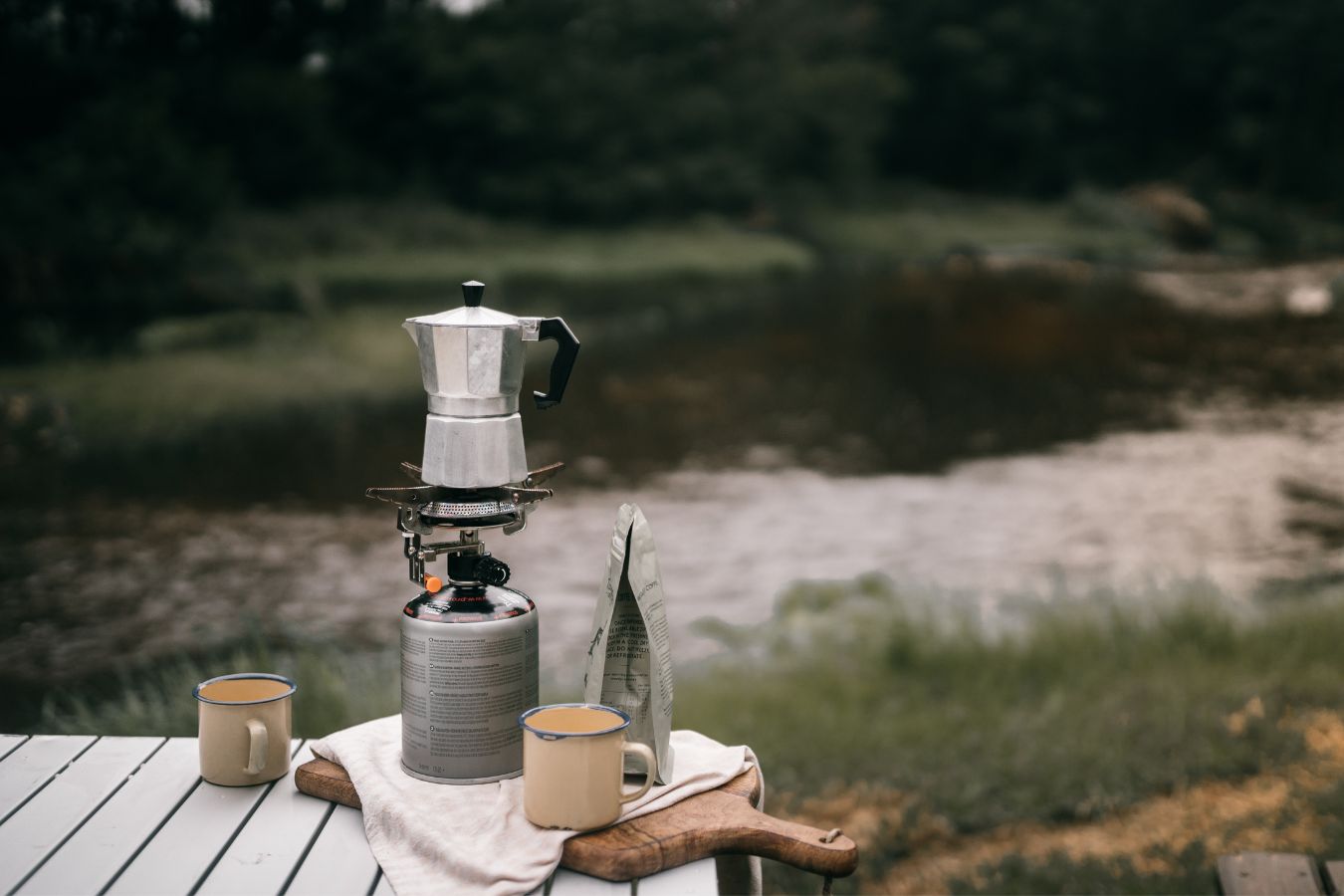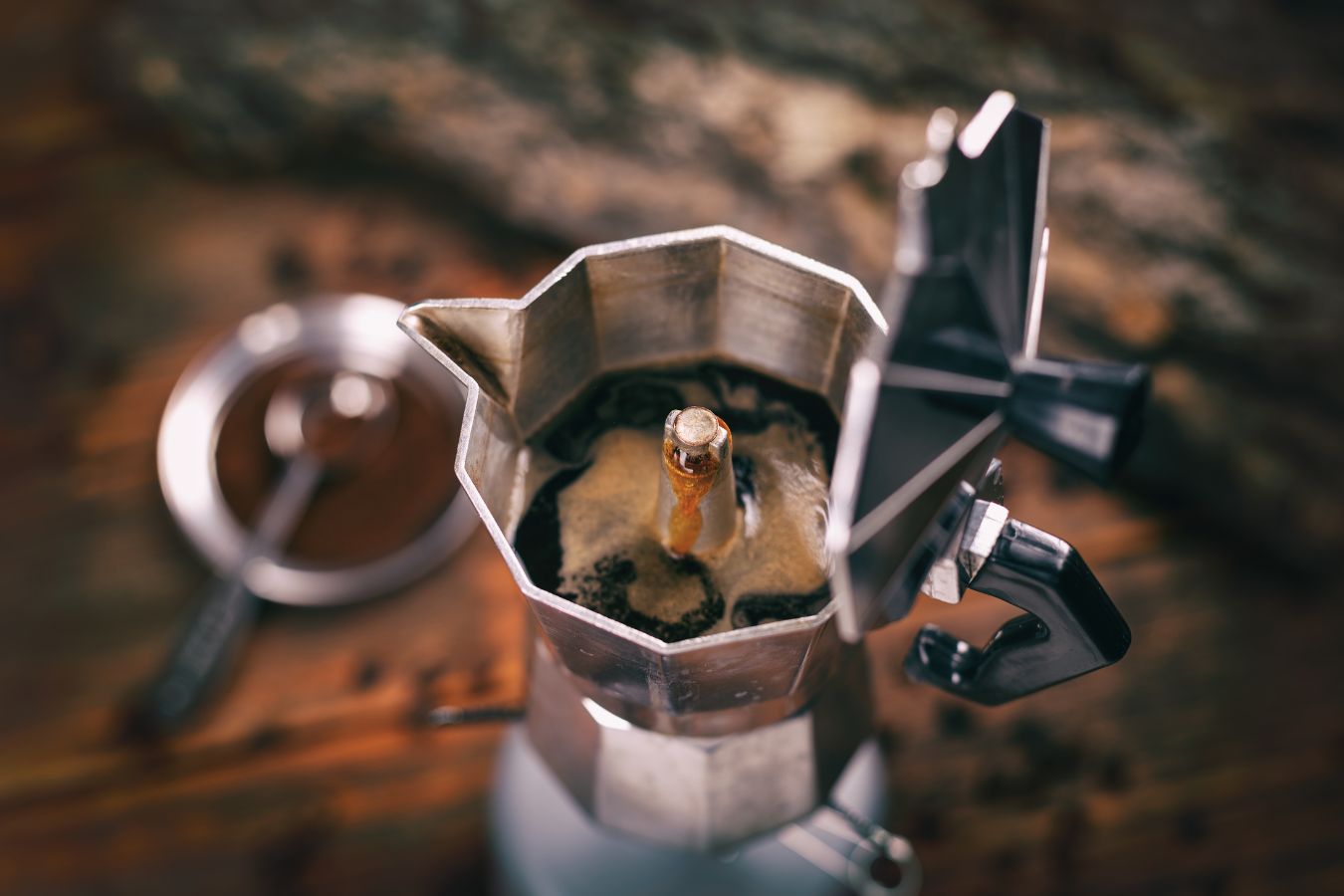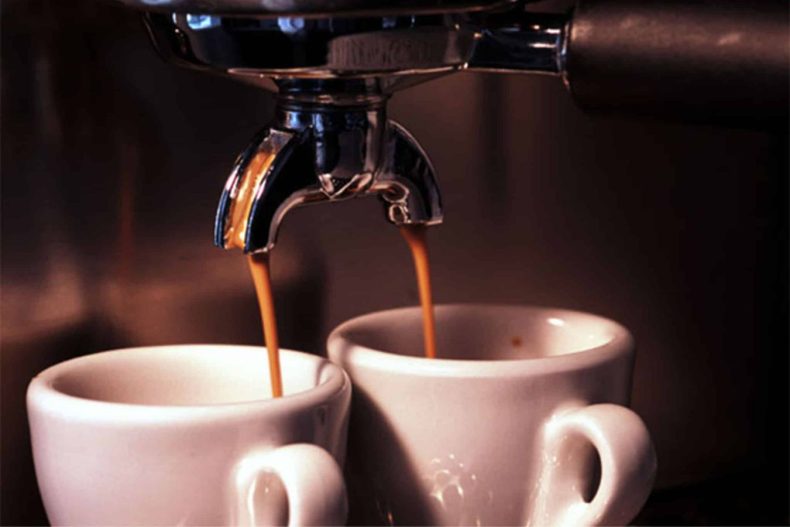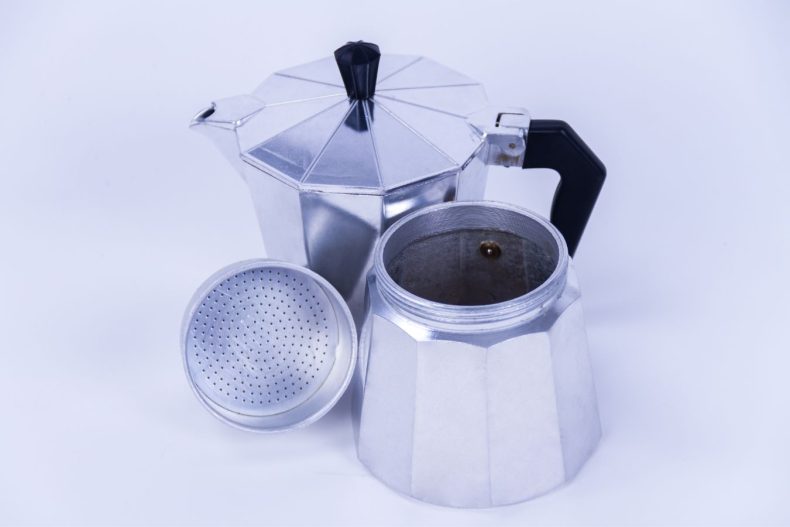
Review Moka Pot Brewing For Beginner: How can a cup of coffee be made on the stove every morning without taking too long, with just “preliminary” technical steps but Espresso?
Moka pot is a suitable choice. And if you don’t focus too much on technique, stop at the habit of morning coffee at home and regularly for many years – that’s all; the Moka kettle can be used for a lifetime if you store it properly;
As mentioned in the History of Moka Warm Design, inside this 8-decade-old design, there is almost nothing to break, and the use is straightforward. Let’s Learn the Review of Moka pot brewing with Helena Coffee Vietnam!
The Macchinetta is the Italian way of naming this instrument, invented by Luigi de Ponti and Alfonso Bialetti in 1933. After conquering the world, Moka Express (the name of the first patented Moka kettle) retains this classic design.
The octagonal aluminum vase is a favorite household item, an industry symbol for millions of people after decades, not just in the modern coffee industry. This article will give you some notes on using the Moka pot to get a “rustic espresso.”
Coffee characteristics are brewed in a Moka kettle.
Like all other brewing methods, the method only contributes to the sublimation of coffee flavor. The quality of coffee is the key, and the “taste” is the key to the final rate.
Moka kettles focus on temperature and pressure in brewing coffee, similar to other methods from Italy, such as Espresso, the smoothness of powdered coffee, temperature, and stress is the determinant of the effectiveness of the Moka kettle.
Put a Moka kettle on the stove; the coffee is always hot!
If classified as a group of brewing methods, Moka pot belongs to the group of boiling methods – so-called cooked rather than pressure methods – as Espresso this gives Moka bank the “gain – lose itself” and we will clarify the following:
- The Moka kettle is boiled until the water boils, evaporates, and forms a large enough pressure to bring the water through the coffee and back up to the top container. The whole process is always maintained at boiling temperature. So the coffee is extracted at a reasonably high temperature, unlike steeping engineering groups such as French press, Pour Over with V60, or Chemex, because the extraction process lets the coffee cool down.
- On the other hand, coffee is not boiled d directly on fire like Turkish coffee or racquet coffee in Vietnam. So the taste is less deformed, the aroma components, acids … Less decomposed. This is a crucial point for coffee lovers who love Moka kettles. The coffee is hot and tastes bad without burning – something original.
Pressure determines the quality of coffee from Moka kettles
A typical Moka coffee pot produces a relatively low pressure of 1 to 2 bars (100 to 200 kPa), while the pressure standard for Espresso is 9 bars (900 kPa). Although coffee from the Moka kettle has a reasonably high extract compared to the usual filtration method but is not considered an authentic espresso.

Later, to add pressure to the Moka kettle, Bialetti produced Brikka – a version of the Moka kettle that incorporated a pressure valve on the nozzle head. This valve “compresses” the pressure in the larger pot, and the coffee will not pour out slowly but is retained until the pressure is large enough to pass through the pressure valve.
As a result, the coffee is brewed at a higher temperature and pressure than a standard pot, making it more like espresso extract with a thick and floaty crema layer.
How to make coffee with a Moka pot?
Start now with suggestions from the seedtomysoul blog seedtomysoul. Still, you need to note, don’t go over the round, and there will be an authentic espresso with Moka pot because, after all, we’re still in the category of manual brew – and Moka contains its exciting things.
Grinding &Fitting
Grind yourself a moderate amount of coffee here. The author chooses 20 grams of whole-city coffee.
It should be noted that the pressure in the Moka kettle is not considerable and cannot be changed, so the more significant the grinding bean size, the faster your coffee will come out, whereas the over-pureed grain will stagnate, and the water cannot go up. Therefore, grinding in a slightly rougher range than salt is balanced.
During this time, you can check the pressure valve – if you use Bialetti Brikka, install it carefully, but don’t squeeze too tightly.
Heating & Pouring
Moving on to step 2, put the coffee in the funnel. With 2-3 cups of brick Bialetti, 20 grams of coffee will fit into the container.
Remember to distribute the coffee in the funnel uniformly; with the Bialetti brick, you should not “compress” the coffee as you would with an espresso machine since the heating steam pressure will not be powerful enough to overcome the compressed coffee layer if squeezed too tightly.
Check the pressure valve in the water container, tighten the body of the jar and the water + coffee container below, and make sure the rubber cushion is located right short and the water does not leak out when heated.
Finally, please heat it on an infrared stove or gas stove until the coffee is pushed through the pressure valve above and flows out to the container. You can lift it out of the stove and pour out the cup.
Issues to keep in mind
It’s pretty simple at first glance. You’ll find making your own Espresso at home is not hard. However, to ensure that this Espresso reaches 80-90% deliciousness as outside the restaurant, you should note some of the following points:
Should I use hot water or cold water? Depending on preference, according to the author, heated cold water will make steam soak through the coffee layer, creating a fresher feeling (however, consider the case of coffee burned due to a warming aluminum kettle).
On the contrary, hot water will be faster, shortening the time of steam passing through the coffee, but the taste will not be as rich as cold water.
How to have crema on the surface like an espresso outside a coffee shop? There are 3 points worth noting to having a crema class.
- First: The upper-pressure valve should not be squeezed too tightly, nor should it be loose. It needs to be screwed at a moderate level. This valve is the tool that makes cream.
- Second: The coffee must be fresh enough. If the coffee is freshly roasted within 1-3 weeks, the cream layer will be excellent, not dissolved until the last drop or if you leave it for 10-15 minutes.
- Third: Ground coffee is not too smooth, not too rough, spread evenly in the funnel, and not tightly compressed. This “cotton, smooth, smooth” coffee also helps you create a beautiful and smooth crema layer outside the café.
After all, although many problems sound complicated, the Moka kettle is simple and “easy” with most coffees. The above experiences are drawn from many experiments of the author with Bialetti brick to get a small ‘tut’ to help you actively make Espresso in a better manual brew at home.

